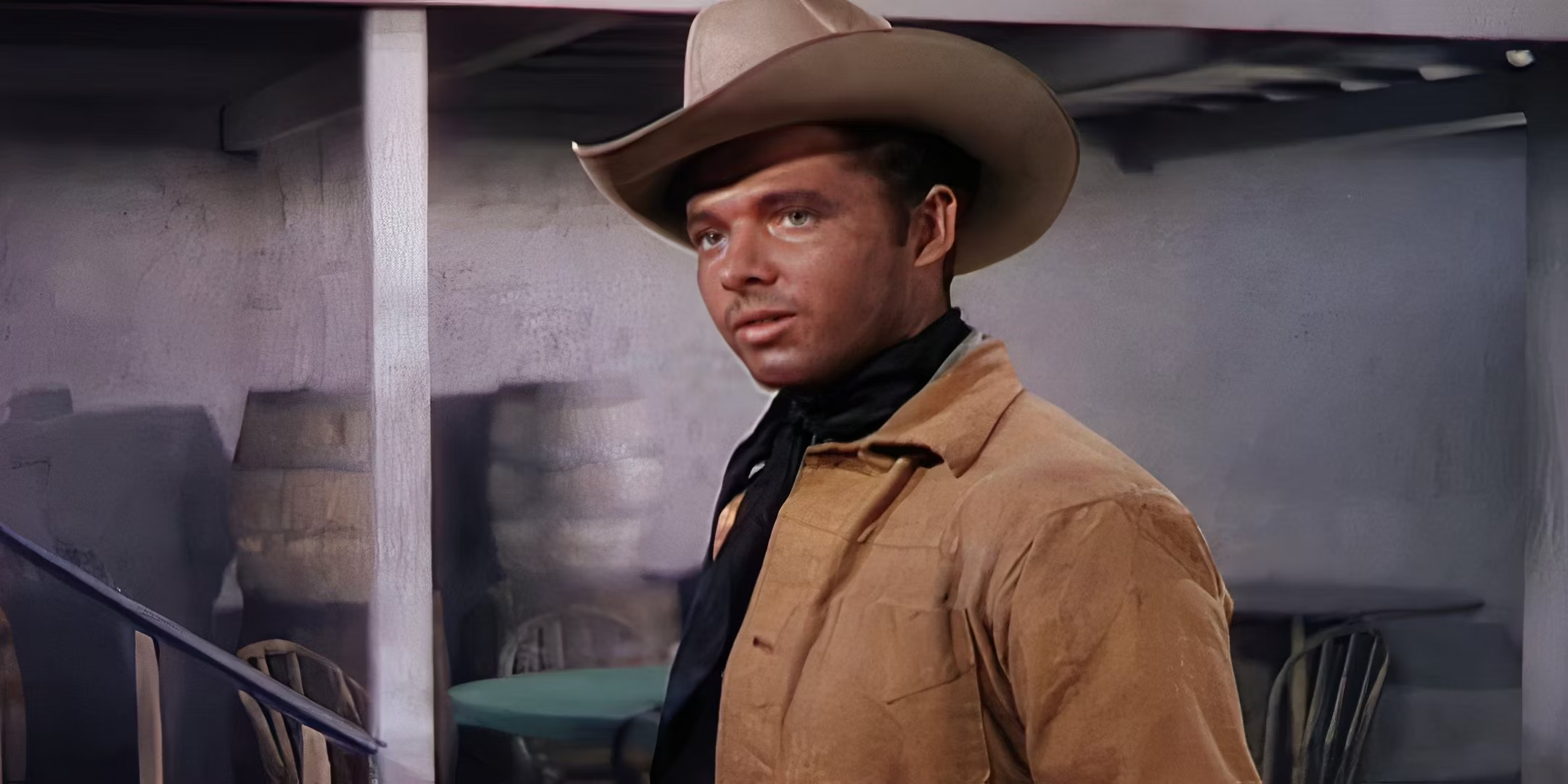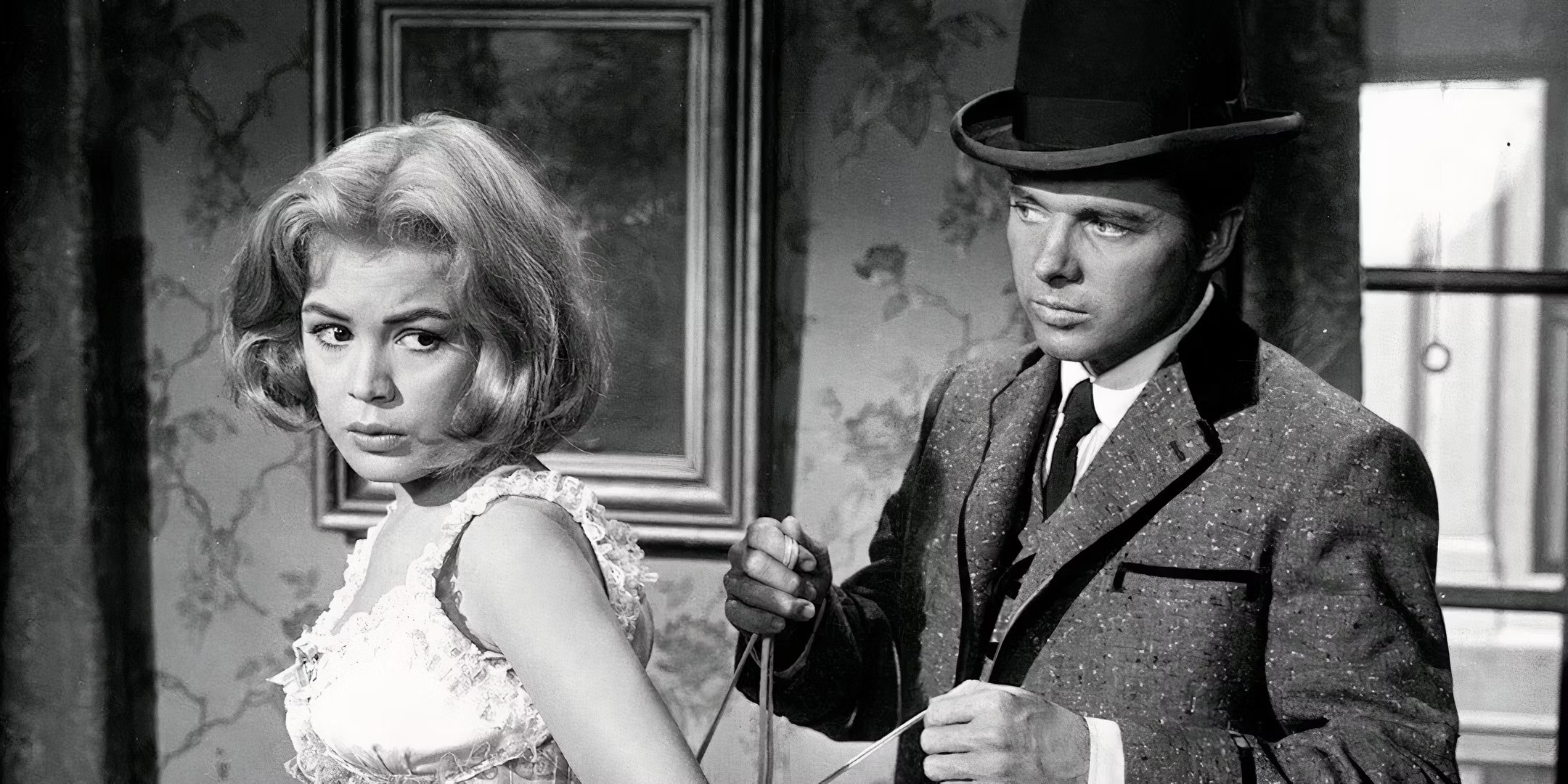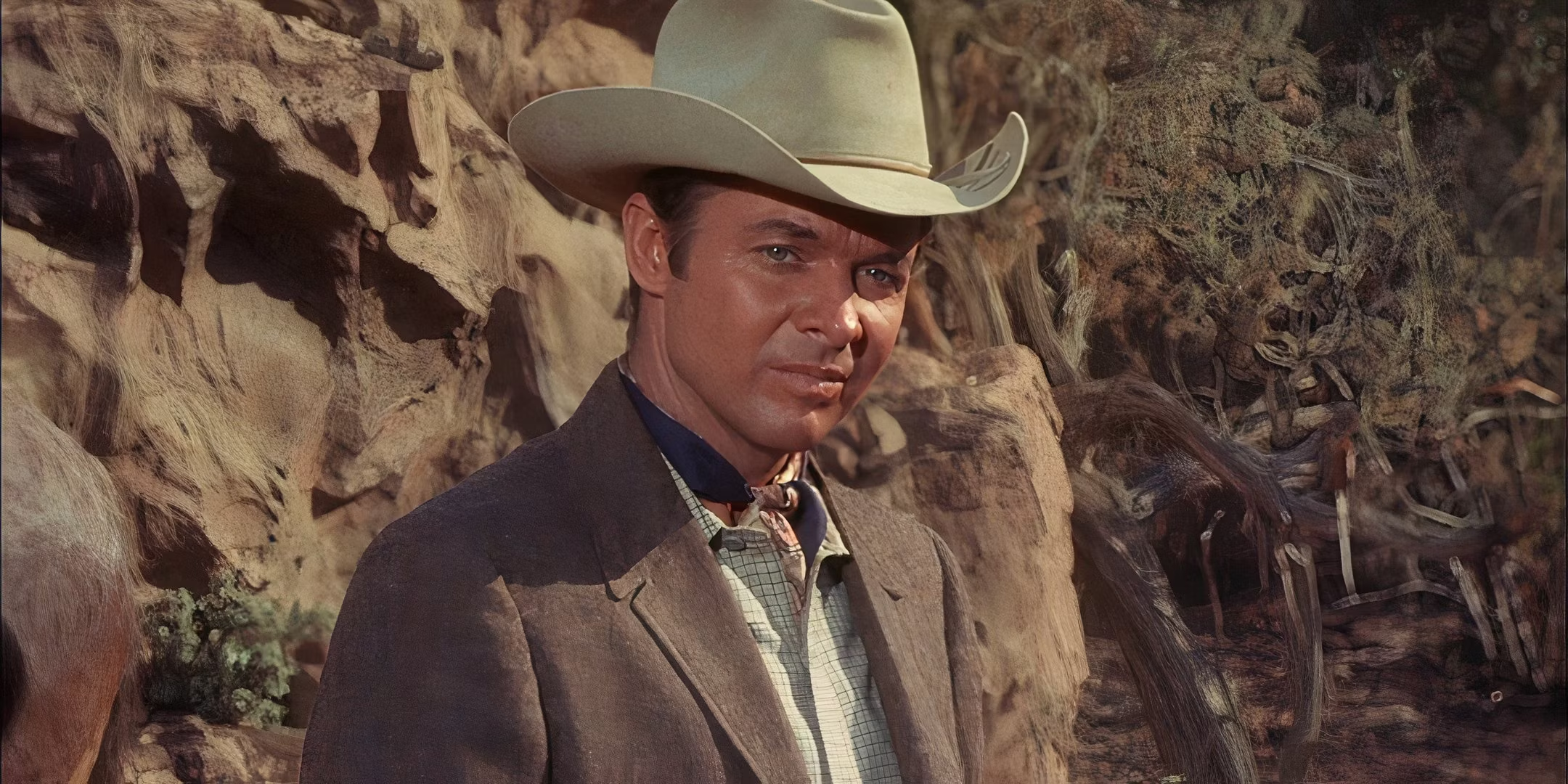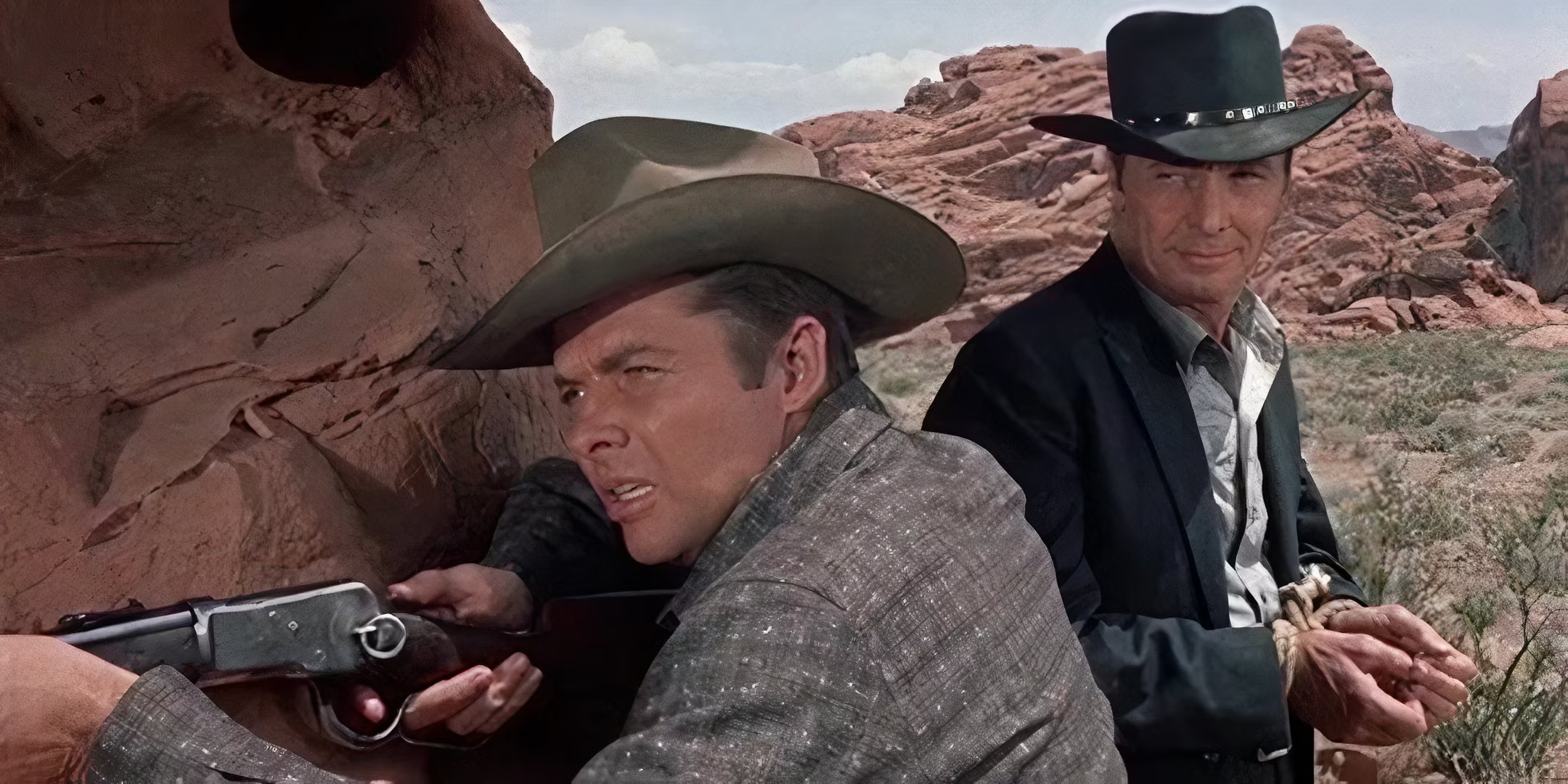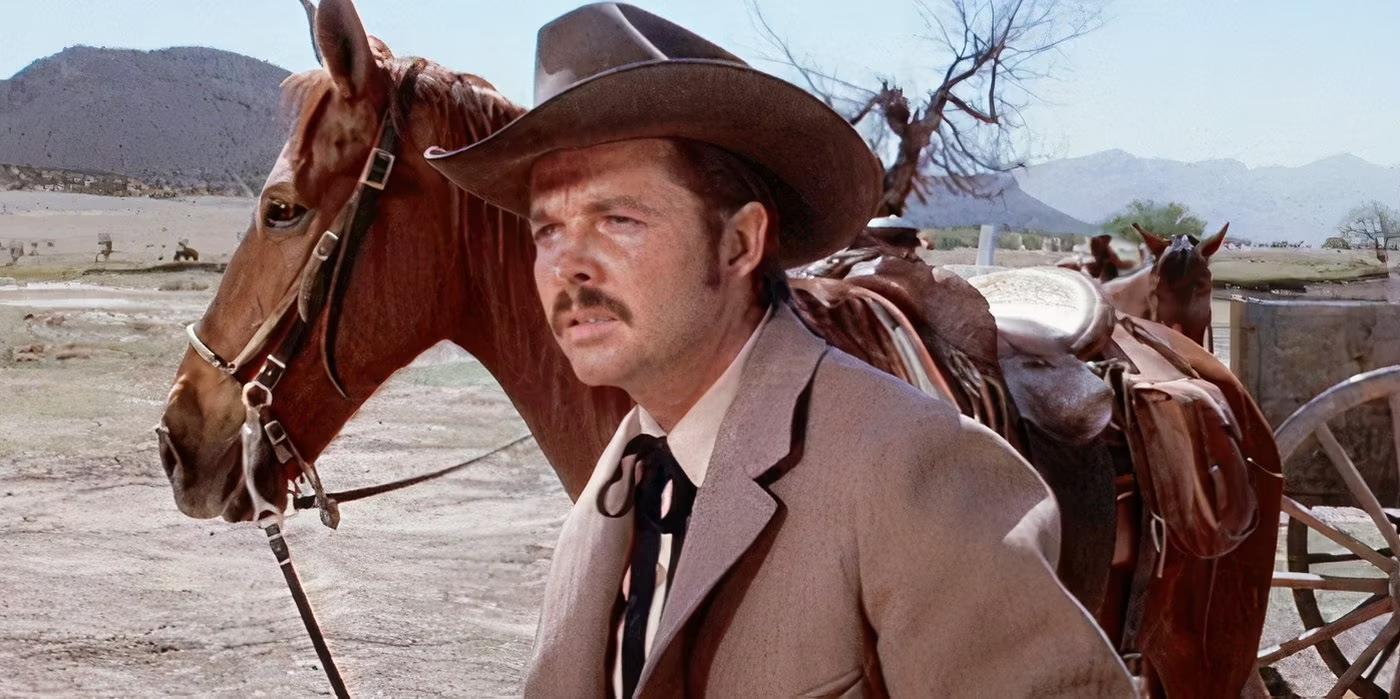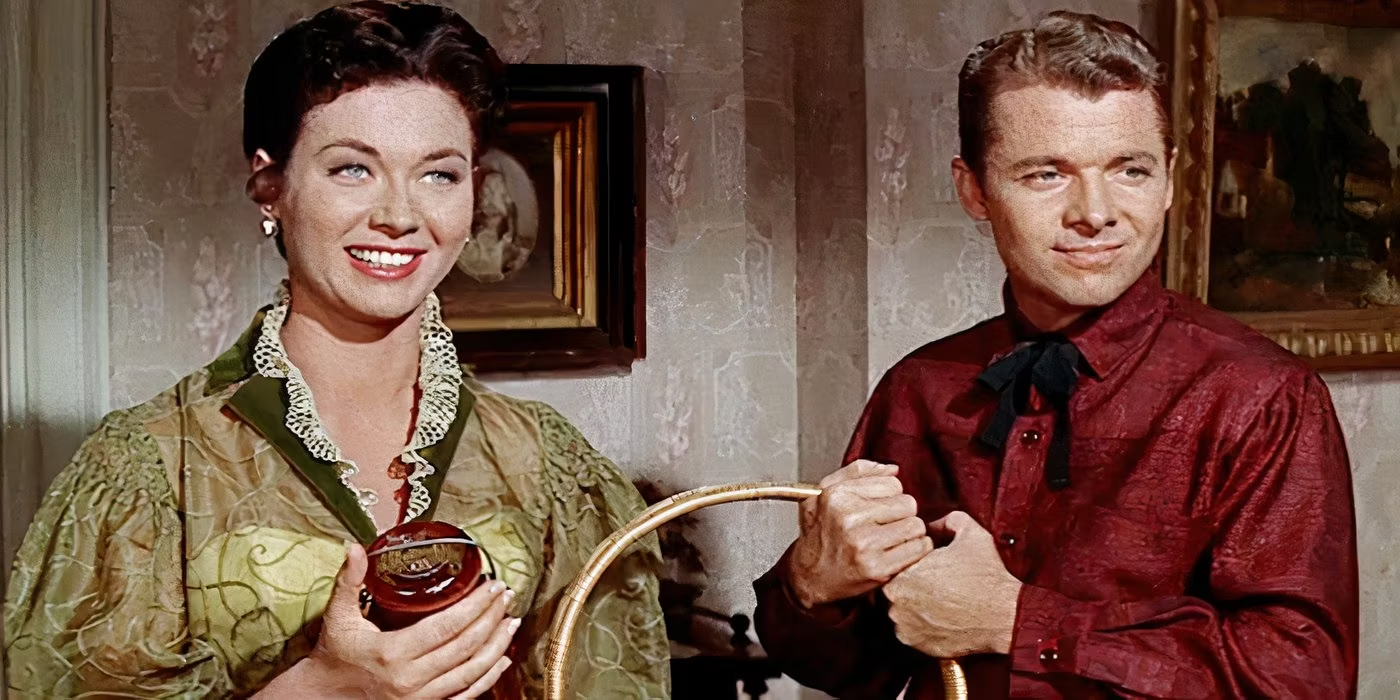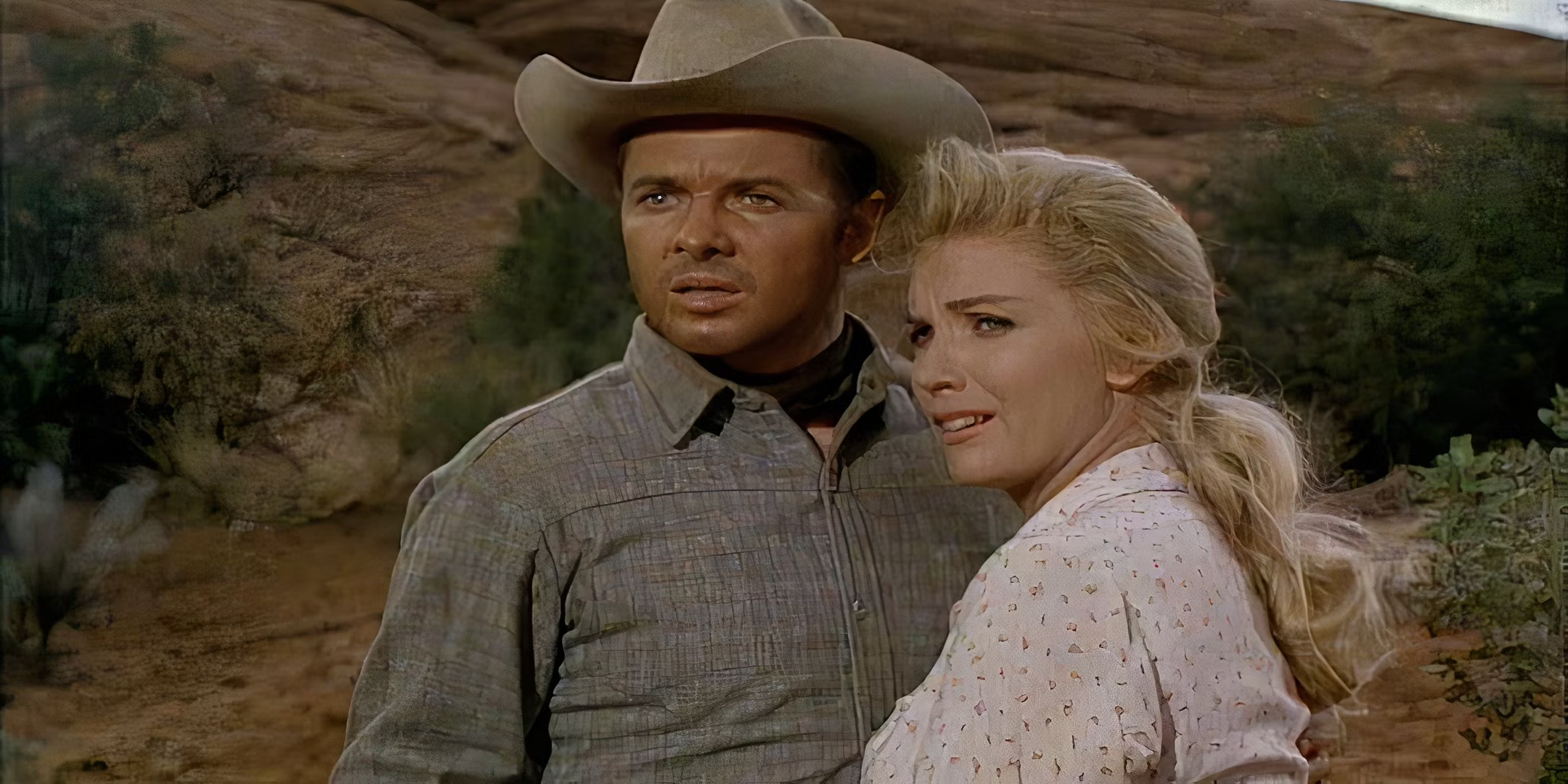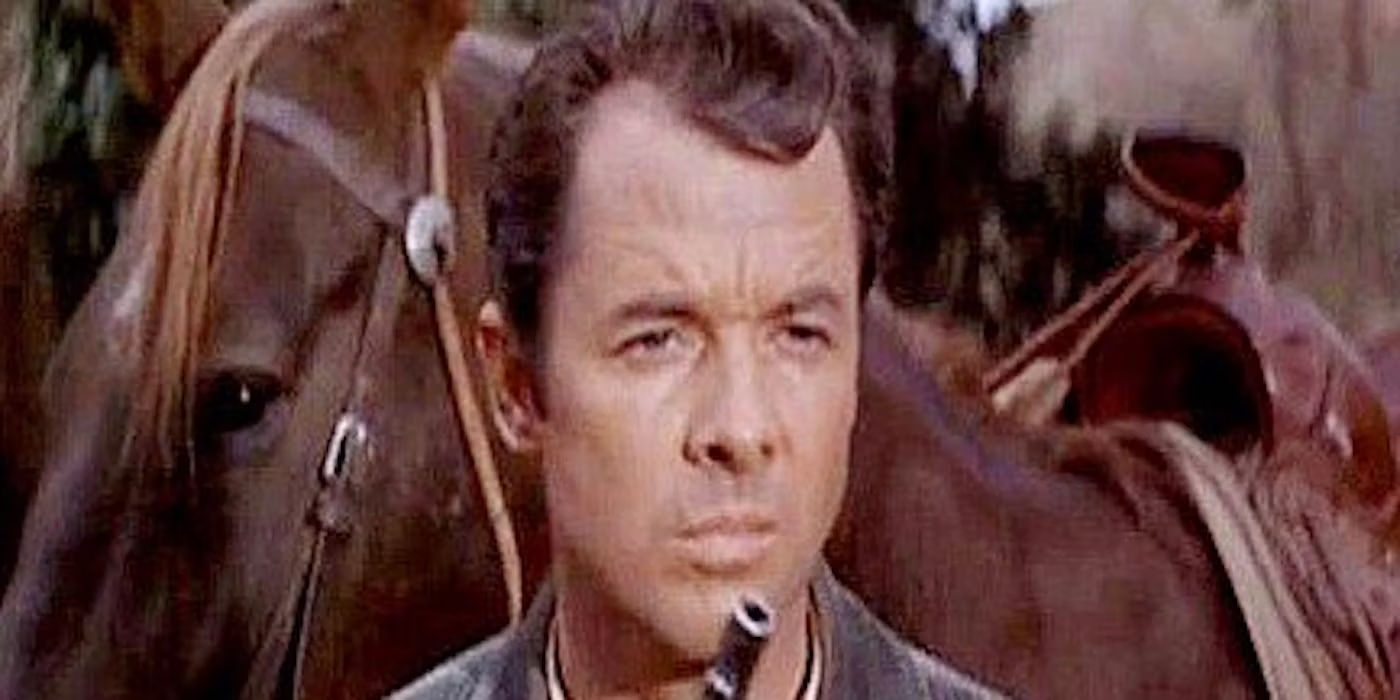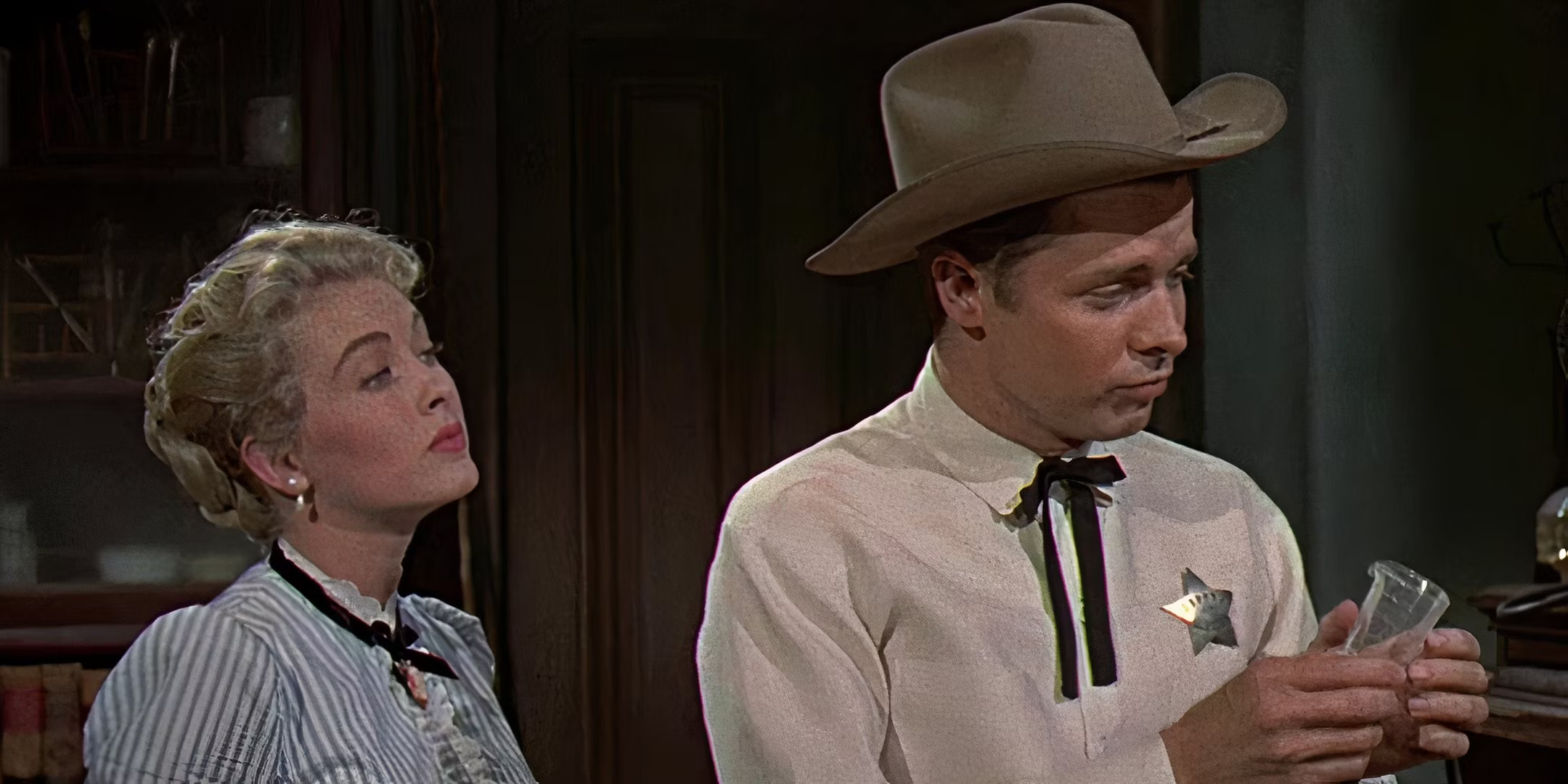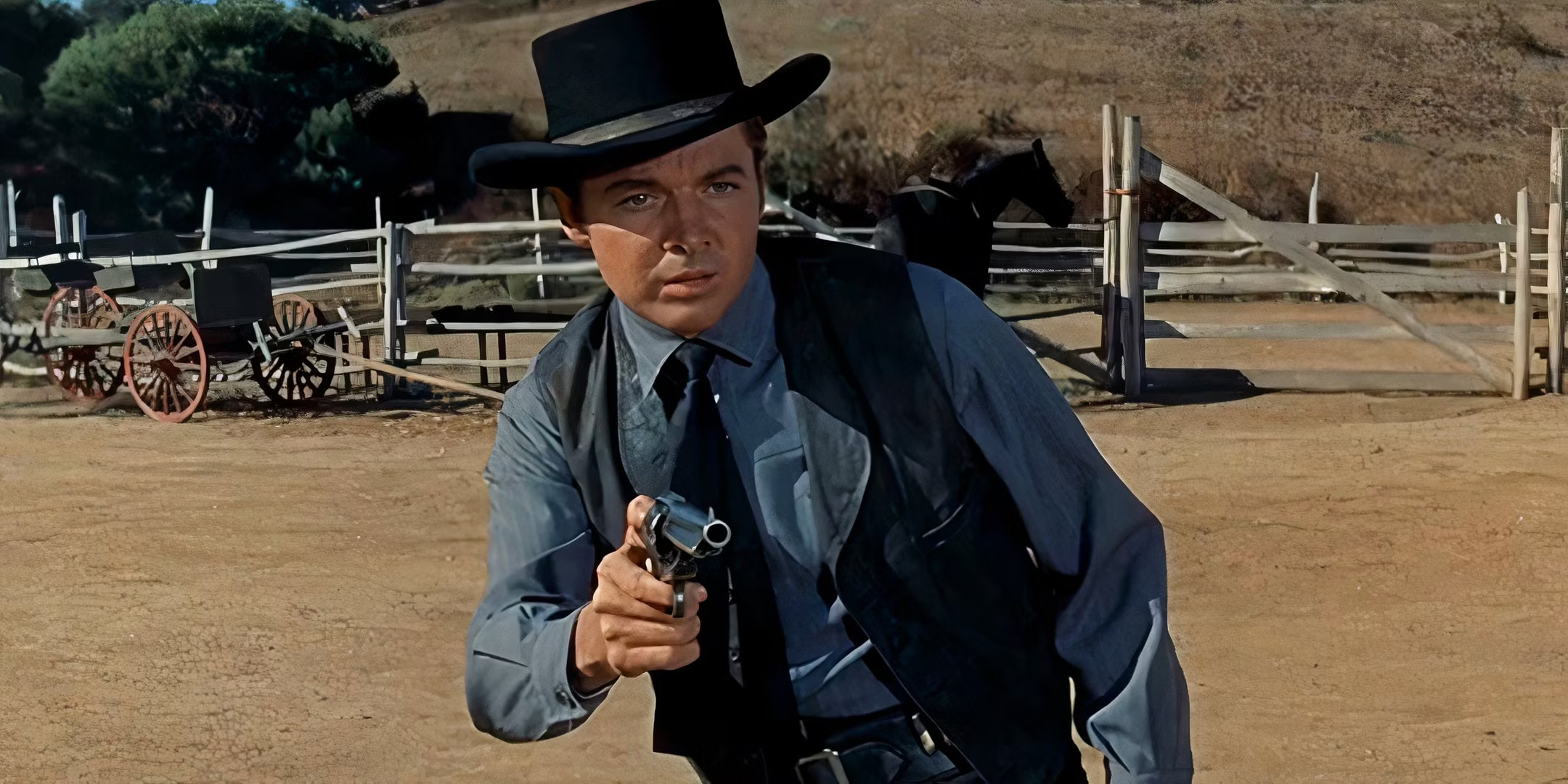Though Audie Murphy is known to be the leading man in several B-Western films, there are still plenty of entries in his filmography that are enjoyed by fans of the genre. Murphy initially gained fame in America following his service in World War II. Following his rise to fame, Murphy was invited to begin his acting career by acclaimed actor James Cagney. While Murphy did act in a few different genres, he is best remembered for his work in Western films in the ’50s and ‘60s.
Without a doubt, Murphy’s best performance is in No Name on the Bullet. The film effectively shows a different side to the charismatic leading man audiences had known Murphy to be at that point in his career. Even though most of Murphy’s other Westerns didn’t receive as much love from critics, audiences, especially earnest fans of the genre, are still able to appreciate the traditional Western stories told.
10 Gunsmoke (1953)
A hired gunman finds trouble when he doesn’t follow through with his job.
Today, Gunsmoke is best known as a popular Western TV series, but a few years before the show premiered, a movie under the same name was released — though they are entirely unrelated projects. The Gunsmoke film is based on Western author Norman A. Fox’s Roughshod and stars Murphy as a hired gunslinger turned ranch owner Reb Kittridge.
Admittedly, Gunsmoke does have a fairly predictable plot, but the film benefits the most from its short runtime and Murphy’s performance. Running just over an hour, Gunsmoke is quickly paced with fascinating character dynamics that keep the plot moving swiftly.
The character at the center of it all is Murphy’s Reb, who is quite the standard character for the actor to portray.Reb’s journey throughout Gunsmoke doesn’t particularly challenge Murphy, but he still delivers a strong performance that entertains.
9 The Wild And The Innocent (1959)
Two inexperienced individuals enter an unfamiliar town and are met with trouble.
By the end of the ’50s, Murphy was a leading actor in three Westerns, one of which was The Wild and the Innocent. In the Western film, Murphy plays a young fur trapper who heads into a new town to trade beaver pelts for money when he comes across a distressed girl (Sandra Dee) who ran away from her family. Additional standout performances include those by Gilbert Roland, Joanne Dru, and Jim Backus,
Murphy’s role in The Wild and the Innocent differs from the characters he usually plays as he is naive and must build up his courage and confidence to survive against those who wish to take advantage of him and Dee’s characters. Regardless of a questionable age gap between the two actors, Murphy and Dee are a compelling on-screen pairing. They help give life to the film and, though The Wild and the Innocent isn’t filled to the brim with humor, there are enough comedic elements that result in a lighthearted watch.
8 Bullet For A Badman (1964)
Two former friends and Texas Rangers find themselves at odds with one another.
In Bullet for a Badman, Murphy teams up with a friend and frequent collaborator of his, Willard W. Willingham, who wrote the screenplay for the film.Bullet for a Badman is based on the book Renegade Posse by Marvin H. Albert and follows Murphy’s character as he’s confronted by an old friend (Darren McGavin). McGavin is one of Murphy’s more memorable co-stars, as their strained relationship provides a unique dynamic between the two.
Despite having it out for the other, the prior friendship and history between the two former Texas Rangers add a level of hesitation, minimizing some predictability in the film’s plot. Otherwise, there are traditional action scenes throughout Bullet for a Badman and a standard leading performance from Murphy that sums up the appeal of his career.
7 Seven Ways From Sundown (1960)
An inexperienced ranger forms an unlikely bond with an outlaw.
In Seven Ways from Sundown, Murphy plays the titular character who is an inexperienced Texas Ranger. Seven Jones is ordered to capture a legendary outlaw known as Jim Flood (Barry Sullivan) and bring him to justice. The contrasting personality between Murphy’s naive ranger and Sullivan’s confident outlaw results in an entertaining dynamic between the two actors.
As Seven and Jim are traveling back home, an unlikely bond forms as the former does all he can to protect the outlaw from vengeful citizens. Murphy gives a compelling performance as his character grows and adapts to the job, but it is Sullivan who steals the show frequently throughout Seven Ways from Sundown. Despite being the film’s antagonist, Sullivan is entirely charming, which leaves audiences equally invested in his story as they are in Seven’s.
6 The Unforgiven (1960)
Conflict arises between the Zachary family and an Indigenous tribe.
Despite the strength of its cast and the bold, unconventional Western story being told, The Unforgiven fails to deliver a truly impactful film. Still, because of the big names and budget attached to the film, The Unforgiven is worthy of being among Murphy’s best Western films. The Unforgiven, based on Alan Le May’s novel, tells a story about a family at odds with the Kiowa tribe after the truth behind their adopted sister’s birth is revealed. At the time, The Unforgiven was a rarity among Western films as it touched on racism in the Old West — at least as much as it could.
Part of the issue surrounding The Unforgiven is the creative differences between the film’s production company and director, John Huston. While the production company sought to avoid controversy in hopes of gaining commercial success, Huston wanted to stay true to Le May’s novel and make a statement about the treatment of Indigenous people.
Murphy’s still gives a memorable performance and shows his talent in a rare, big film.
As a result, The Unforgiven never feels fully realized. While Murphy’s character gives into racism and isn’t entirely likable, he still gives a memorable performance and shows his talent in a rare, big film.
5 Ride A Crooked Trail (1958)
A bank robber pretends to be a respected marshal.
Ride a Crooked Trail centers on Murphy’s bank robber character, fittingly named Joe Maybe, who gets mistaken for U.S. Marshal Jim Noonan and gladly takes on the new identity. Under his false persona, Joe hopes to utilize his power to rob the town’s bank. Compared to Murphy’s other Westerns, Ride a Crooked Trail isn’t packed with as much action.
Though there is a bit of drama that ensues when another group of robbers comes into town, most of the film is lighthearted. Responsible for some of the film’s levity is Walter Matthau as the local Judge Kyle. During his acting career, Matthau became known for frequently playing characters at odds with others around them, and in Ride a Crooked Trail, Judge Kyle grows to become similarly cynical about Joe.
4 Six Black Horses (1962)
Two men travel into town with a woman holding back her true intentions.
Murphy’s involvement in Six Black Horses marks the second time he worked with the famous Western director Harry Keller. Six Black Horses also stars Dan Duryea and Joan O’Brien. Together, their three characters travel into town per the request of O’Brien’s character, and it soon becomes apparent that she has a hidden agenda. Six Black Horses moves fairly quickly and has some entertaining confrontations as the three make their way into town, building up a good amount of tension.
Murphy, O’Brien, and Duryea are a well-matched trio with their abilities as actors highlighted by Burt Kennedy’s script. The latter actor is best known for portraying villainous characters in movies. Even though his Six Black Horses character, Frank Jesse, isn’t among his most heinous, Duryea still has a little edge that’s enjoyable for fans of his work.
3 Gunfight At Comanche Creek (1963)
A detective goes undercover with bank robbers.
Containing some of the best tropes of the Western genre is Gunfight at Comanche Creek. The Murphy-led Western follows a group of bank robbers who trick others into committing crimes so they can kill them and collect reward money. Murphy plays Detective Gifford in Gunfight at Comanche Creek. As expected of a classic Western tale, there is plenty of action and even a bit of romance on the side as well.
Among all the B movies in Murphy’s filmography, Gunfight at Comanche Creek is one of the best. There are a few flaws within the film, but Murphy is a strong lead and the story is a treat for fans looking to watch a familiar Western tale unfold. Additionally, the supporting cast includes a compelling, villainous performance by DeForest Kelley as the bank robbers’ leader a few years before his famous role as Leonard McCoy.
2 Destry (1954)
When put into a position of power, a man uncovers the truth behind a sheriff’s mysterious death.
Directed by George Marshall, Destry is a nearly scene-for-scene remake of a black and white film from the late ’30s, Destry Rides Again, starring James Stewart as the titular character.Destry Rides Again is also directed by Marshall and was a part of a great film year for James Stewart. In Destry, Murphy takes on the titular role — the son of a famed gunman who is tasked with bringing down local corrupted officials.
Even though Murphy differs in range and acclaim, he still handles the role previously depicted by Stewart. Murphy has a similar level of charm in his performance and the character, in many ways, is the essence of Murphy as an actor. When he first arrives in town, Destry prefers non-violent approaches to conflict, leading many to doubt his strength, but when it matters most, his undisclosed knowledge of guns sets him up to be a crucial figure and one that isn’t to be messed with.
1 No Name On The Bullet (1959)
Widely considered to be one of Murphy’s best films and his best Western film is No Name on the Bullet. Murphy, who was mostly known for his heroic roles at the time, played a ruthless gunslinger. No Name on the Bullet follows Murphy’s John Gant as he makes his way into Arizona, frightening the local community as it’s assumed he’s there to take someone out. No Name on the Bullet plays out like a psychological thriller as audiences see the townspeople become increasingly paranoid about John Gant’s next move.
The story in No Name on the Bullet has themes of life and death, good versus evil, and corruption. That being said, there isn’t as much action in the film. The town is full of secrets and hidden crimes and John’s looming presence is viewed as a greater threat than the actions he takes. Murphy plays the cold and unreadable gunslinger effectively and captivates audiences, keeping their attention until the film’s suspense is lifted at the very end.



